
The Ashmolean Museum of Art and Archaeology on Beaumont Street, Oxford, England, is Britain's first public museum. Its first building was erected in 1678–1683 to house the cabinet of curiosities that Elias Ashmole gave to the University of Oxford in 1677. It is also the world's second university museum, after the establishment of the Kunstmuseum Basel in 1661 by the University of Basel.

John Sell Cotman was an English marine and landscape painter, etcher, illustrator, and a leading member of the Norwich School of painters.
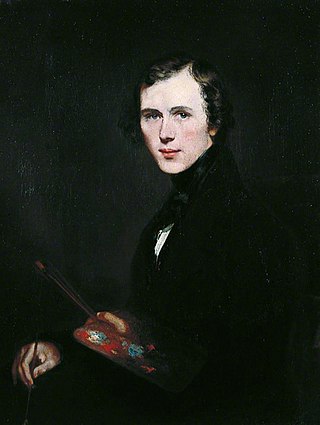
Thomas Sidney Cooper was an English landscape painter noted for his images of cattle and farm animals.

Derby Museum and Art Gallery is a museum and art gallery in Derby, England. It was established in 1879, along with Derby Central Library, in a new building designed by Richard Knill Freeman and given to Derby by Michael Thomas Bass. The collection includes a gallery displaying many paintings by Joseph Wright of Derby; there is also a large display of Royal Crown Derby and other porcelain from Derby and the surrounding area. Further displays include archaeology, natural history, geology, military collections and world cultures. The Art Gallery was opened in 1882.
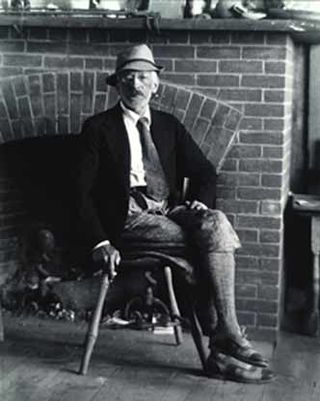
Charles Herbert Woodbury, was an American marine painter.
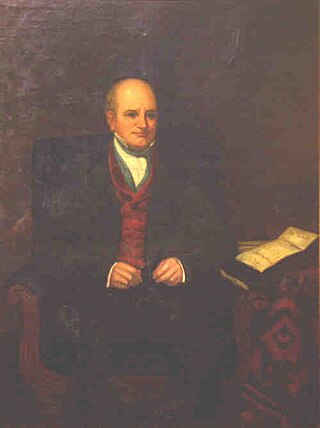
Joseph Strutt (1765–1844) was an English businessman and philanthropist, whose wealth came from the family textile business. A native of Derby, Strutt was a radical social reformer who made significant donations and founded several important institutions in the town, including donating the land for the creation of Derby Arboretum, England's first urban public park. He twice served as Mayor of Derby.
The California Art Club (CAC) is one of the oldest and most active arts organizations in California. Founded in December 1909, it celebrated its centennial in 2009 and into the spring of 2010. The California Art Club originally evolved out of The Painters Club of Los Angeles, a short-lived group that lasted from 1906–09. The new organization was more inclusive, as it accepted women, sculptors and out-of-state artists.
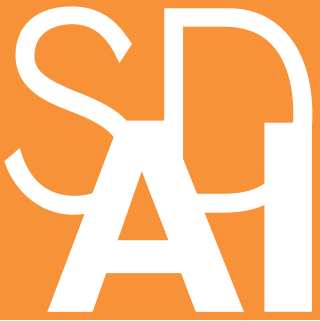
The San Diego Art Institute was a contemporary art museum with a focus on artists from the Southern California and Baja Norte region. It was founded in 1941 as the San Diego Business Men's Art Club. Its name was changed in 1950 to the San Diego Art Institute. In 1953, women were admitted for membership. It officially became a nonprofit in 1963. The San Diego Art Institute in Balboa Park and Lux Art Institute in Encinitas merged in September 2021 to become The Institute of Contemporary Art, San Diego, with each museum continuing to operate at its respective site.
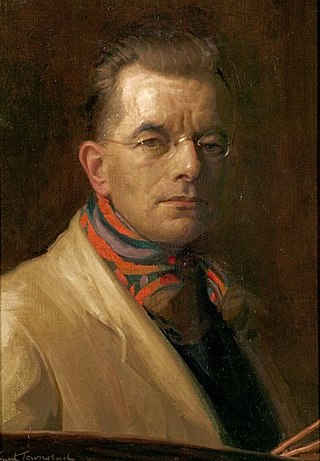
Ernest Townsend was a British portraitist from Derby.

Alfred John Keene (1864–1930) was a British watercolour artist working in Derby.

Romeo and Juliet: the Tomb Scene is a painting by Joseph Wright of Derby, completed by 1790, exhibited in 1790 and 1791, shown in the Derby Exhibition of 1839 in the Mechanics' Institute, and now displayed in Derby Museum and Art Gallery. The painting exhibits Wright's famed skill with nocturnal and candlelit scenes. It depicts the moment in Shakespeare's Romeo and Juliet when Juliet, kneeling beside Romeo's body, hears a footstep and draws a dagger to kill herself. The line is "Yea, noise? Then I'll be brief. O happy dagger!"
Ernest Ellis Clark was a Derby born artist who became an artist for Crown Derby. Several of his paintings are in Derby Museum and Art Gallery.

Alfred Edward Goodey (1878–1945) was a collector of paintings, prints and photographs, especially those connected with the English Midlands town of Derby.

Harold Gresley (1892–1967) was a British artist, following his father and grandfather. He was a painter of landscapes and portraits in watercolour and oil. He served in the Royal Fusiliers in the First World War and was awarded the Distinguished Conduct Medal. He has a substantial number of paintings in Derby Museum and Art Gallery.

The Derby Exhibition of 1839 was the first exhibition in Derby. It was held at the town's Mechanics' Institute, which later became known as Albert Hall. The exhibition was in line with the founding values of the Institute, which were to extend the spread of knowledge among the people of Derby. The institute had organized a wide range of events since 1825, including lectures, concerts, and displays. The exhibition followed the first such organised by Manchester Mechanics Institute in 1837 and Derby's was one of several that were organised that year in English industrial towns and cities. Derby's exhibition had a profound impact and was one of the factors leading to the foundation of the Museum and Library in 1878. Derby Museum and Art Gallery, which is next door to what was the Mechanics Institute building, now holds many of the objects from the exhibition.

Henry Lark Pratt (1805–1873) was an English painter who trained in the porcelain industry.

Alfred Hitchens was an English painter, father, grandfather and great grandfather of artists Ivon Hitchens, John Hitchens and Simon Hitchens respectively. His work was regularly exhibited at the Royal Academy of Arts.
Marion Elizabeth Adnams was an English painter, printmaker and draughtswoman. She is notable for her surrealist paintings, in which apparently unconnected objects appear together in unfamiliar, often outdoor, environments. Some of her paintings depict landscapes and landmarks close to, or within, her native town of Derby.

Alfred Ernest Egerton Cooper, RBA, ARCA, was a British painter of portraits, landscapes and other figurative work. In the era of Modernism, he continued to work in traditional style from his studio in Chelsea, London.
Henry Vaughan was a British art collector. He is best known for his many generous gifts and bequests to British and Irish public collections.















